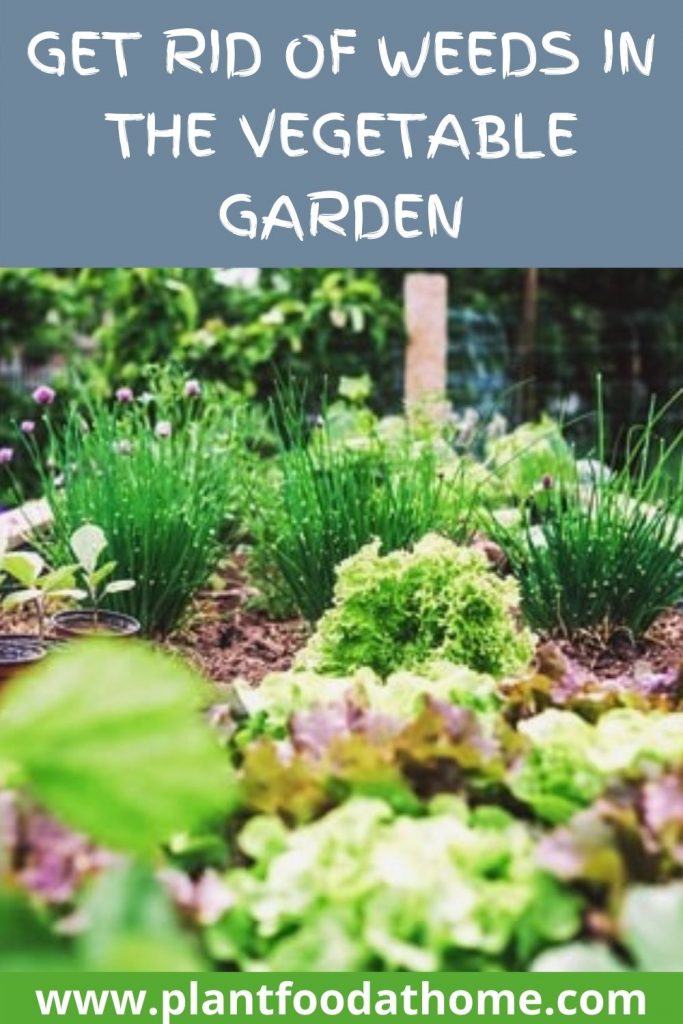As home gardeners, the question of how to keep weeds out of the vegetable garden has occupied many a weekend hour or two. Add to the equation how to get rid of weeds using natural and organic methods and weed control takes on a whole new dimension of problem-solving. But I’m here to help! In this article, we look at natural and organic vegetable garden weed control methods for ideas and strategies you can implement in your vegetable garden at home.
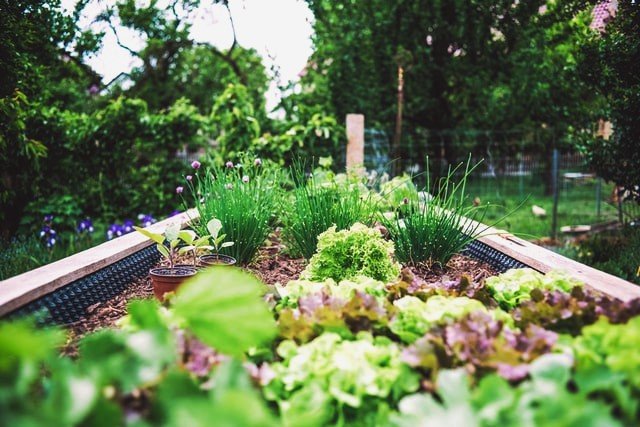
Natural and organic vegetable garden weed control methods include no-dig method, planting edible ground covers to suppress weeds, using newspaper, shredded paper, cardboard and organic mulch, boiling water, vinegar, targeted fire and good old fashioned hand-pulling the weeds. Use one or a combination of these weed control methods to get rid of weeds in the garden naturally.
Table of Contents
Why Natural and Organic Weed Control?
Traditional food production employs the use of chemicals to grow our food. With the aid of herbicides, fungicides and pesticides these toxins enter our food, then our bodies and at the same time destroys the soil they are grown in.
As home gardeners, we can choose to use natural and organic weed control methods to grow food free from chemicals in soil that is healthy and alive. And best of all, these home remedies for weed control are inexpensive or free!
Which brings us to what are weeds, really?
What Are Weeds Anyway?
Weeds are defined as any unwanted plant grown in the wrong place. They are usually also characterized by their ability to reproduce quickly.
Some weeds have a long tap root, for example, dandelion. The whole root needs to be removed or else it will just grow back. Other weeds produce runners, growing in all directions. If only part of the runner is removed, the weed will still continue to grow. Again, the whole weed needs to be removed.
In some instances, weeds are cultivated on purpose and are known as beneficial weeds and can be eaten. Dandelion is another good example of this as well as purslane, nettle and chickweed.
Weeds actually play an important part in the garden. They cover and protect any bare patch of soil which stops the soil from drying out. This reduces soil erosion and keeps the topsoil from being blown away. The roots of weeds form water and air channels for worms and other beneficial insects which helps keep soil from compacting as well as providing organic matter for the soil.
But when you are trying to grow vegetables, weeds can play havoc in your garden. Weeds can compete with vegetable crops by using up soil nutrients, stealing sunlight, smothering young plants and generally taking over any available growing space.
Organic Weed Control Plan
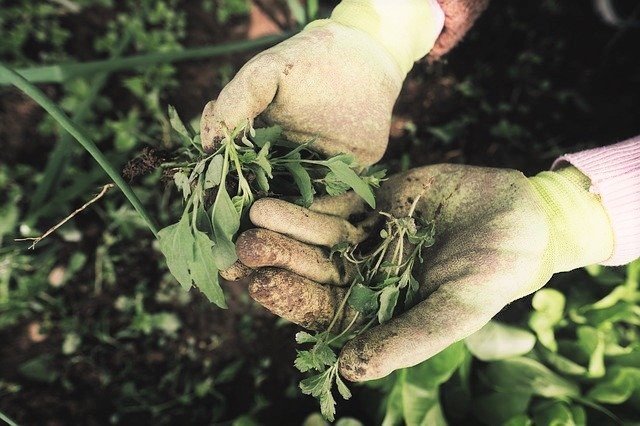
So how do you organically prevent weeds in the vegetable garden? Besides organic herbicides, which is not selective about the plants and insects it eliminates, there are many organic methods for controlling weeds. And by combining a number of them, you can naturally control weeds in the garden quite easily.
Let’s look at them more closely so you can develop a weed control plan that will work for you.
No-Dig Method of Weed Control
Weed seeds are spread by wind and birds as well as those left to flower in the home garden environment. Soil contains hundreds and thousands of these seeds but it is only the seeds just below the surface of the soil that will grow. These seeds have access to the light and water they require to germinate.
The no-dig method of weed control, also known as no-till, is about minimizing disturbance to the soil by not tilling or cultivating the soil. Because digging and tilling the soil will bring new seed to the surface of the soil where they have the potential to germinate.
Of course, you will need to dig a little to plant new seed or seedlings, but the idea here is to minimize the disturbance to the soil and keep potential weeds buried where they won’t be a nuisance in the vegetable garden.
Plant Edible Ground Covers to Control Weeds in the Garden
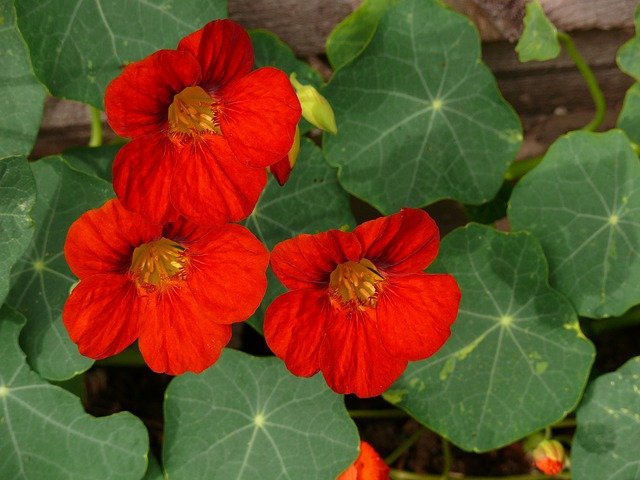
Planting edible ground covers in the vegetable garden (also known as intercropping or interplanting) works by covering bare soil and stops weeds from growing. Edible ground cover plants can also provide flowers to attract beneficial insects to help pollinate the vegetable garden and of course, they are edible!
In between edible plants and in bare patches of the vegetable garden, plant edible ground covers such as nasturtium, thyme, oregano, marjoram and alpine strawberries. These plants will all spread and suppress weeds from growing in the vegetable garden.
Related Reading: Eating Nasturtium – Tips for Using Nasturtium In The Kitchen
Mulch To Suppress Weeds
Mulch is always a good idea in the vegetable garden. The best garden mulch for weed control not only feeds the soil, but it also protects plant roots, helps retain moisture in the soil and of course, it helps control weeds by acting as a barrier. For natural ways to mulch, you can try any of these methods or even a combination.
Newspaper
Lay down thick sheets of newspaper directly on the soil to suppresses weeds. The newspaper also helps to mulch the soil and will decompose back into the soil, making it an effective way to compost newspaper.
To work as a weed control barrier in the vegetable garden, remove any existing visible weeds, lay thick layers of newspaper on the soil, then top with compost. The compost will keep the newspaper in place as well as help the newspaper to breakdown over the season. To plant vegetables, simply make small holes in the newspaper where you wish to plant, being careful not to disturb too much of the newspaper.
Shredded Paper
For established plants, shredded paper can be sprinkled around the plant and then watered to keep it in place. The paper will hold together once wet, so it’s won’t blow away. This method is recommended for established plants as the paper tends to form a strong barrier which is perfect for weed control though not for seeds or small seedlings.
Avoid glossy and colored paper as they are not good for the soil and they won’t break down as easily. They can also use harmful chemicals you don’t want leeching into the soil and being absorbed by food-producing plants.
Instead, consider your no longer needed bills, envelopes (remove any plastic window), work and school notes and other correspondence.
A paper shredder makes this job simple.
Again topping with compost will help the paper to breakdown by the end of the season. Without compost, the shredded paper can dry too hard and form an impenetrable layer which won’t allow enough water through to the soil beneath.
Cardboard
In the same way as newspaper, cardboard also acts as a barrier against weeds in the veggie garden. Lay sheets of cardboard directly on the soil after removing visible weeds. Top with cardboard with compost and make small holes in the cardboard to plant out vegetable seedlings.
I’ve found if you make the compost thick enough, 4-6 inches (10-15cm) at least, and your seedlings are still fairly small, you can plant directly into the compost on top of the cardboard. By the time the seedlings need more soil space, the cardboard will have decomposed sufficiently enough for the plants to grow through to the soil beneath. For this method, use 1-2 layers of cardboard to allow it to breakdown in time for the new seedling growth.
Organic Mulch
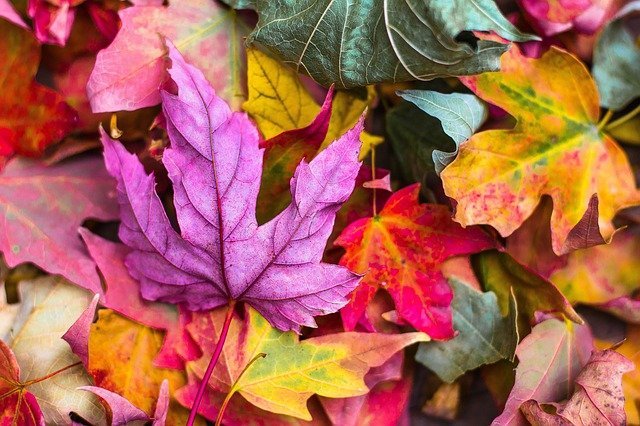
The best type of mulch for the vegetable garden are locally available mulches such as homemade composts, dried fall leaves, weed-free straw, hay, sugarcane and grass clippings.
Avoid wood and bark chip mulch in the vegetable garden as their high-carbon nature draws nitrogen from the soil.
Boiling Water Weed Control
Boiling water used to get rid of weeds is very effective. Weeds with longer taproots will require more than one application but surface roots will die quickly.
Use a kettle with a spout and wear protective clothing to guard against accidental spills.
Be mindful of nearby plants because the boiling water can damage them if it’s poured directly on the plant. The boiling water works by collapsing the weeds cell structure and ultimately this kills the weed. It can be helpful to first cut the weed to the ground before pouring the boiling water onto the weed. This gives the boiling water more opportunity to reach the all-important roots.
I really like this method for getting rid of weeds because it’s natural, organic and you don’t need to spend money on equipment you don’t already have. It’s a little time intensive as you’ll have to continually refill and reboil your kettle in order to cover even a small patch of weeds but more importantly, it works! And once you have eliminated the weeds, any new weeds that do appear will become less over time.
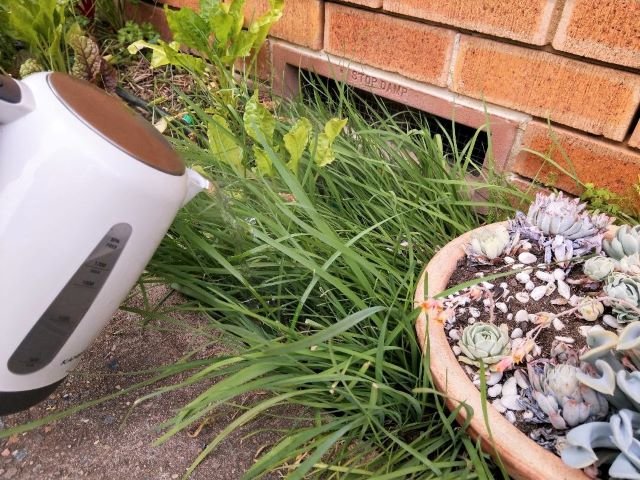
Vinegar to Kill Weeds
Vinegar is very effective at killing weeds in the vegetable garden. However, there is a downside to using vinegar and it should be used with caution.
The danger of using vinegar in the garden is that some gardeners mistakenly think because it is natural and organic it’s, therefore, a harmless method for controlling weeds in the garden. Whilst this is mainly true for regular household white vinegar, the results will be minimal compared to agricultural vinegar.
The difference is regular vinegar contains about 5% acidity while agricultural vinegar contains 20-30% acidity.
Regular white vinegar can be used effectively on young weeds with shallow roots. For older, more established weeds with long taproots, agricultural vinegar will be much more effective. But you need to be aware that agricultural vinegar causes soil and environmental damage.
Use vinegar carefully as it won’t discriminate between plants you want to keep and those you don’t. You can use a kitchen funnel to direct the vinegar on the weeds or even a small paintbrush to paint the vinegar onto the weeds.
If you choose to use the agricultural vinegar, wear protective clothing and eyewear as this strong concentration can also be harmful to skin and eyes.
To truly garden naturally and organically, avoid the agricultural vinegar and instead try the regular household vinegar (sparingly) along with some of the other methods detailed in this article.
Flame Weeding Using Targeted Fire
Flame weeding uses targeted fire to heat the weed which destroys the tissue of the plant and results in death. However, long tap roots will survive and grow back so additional treatment at 1-2 week intervals over a few treatments may be needed to be effective. The theory goes that eventually the weeds give up and die.
It’s usually recommended that flame weeding in the vegetable garden be done after sowing vegetable seeds before seedlings emerge. Make sure the soil is lightly damp to avoid setting fire to everything and use precautions such as having the garden hose handy to put out any escaped flames.
Flame weeders are also effective for weeding between rows of vegetables as well as other weed control around the home such as between pavements, cracked driveways and paths.
This flame weeder is a best seller on Amazon. Flame weeders such as this need to be hooked up to a propane tank which needs to be carted around. So if the weight of the tank is not an issue (you can also purchase a dolly or cart if it is), then flame weeders are an effective method of organically controlling weeds in the vegetable garden.
Hand Pull Weed
Keep on top of weeds by removing them when you see them. It’s a lot easier to remove small weeds before they become large weeds. The other really important point here is – do not allow weeds to flower. If you pull the weeds before they flower you won’t have an abundance of seed spread throughout your vegetable gardening just waiting for the right conditions to germinate.
Weeding after rain is easier, the moistened soil loosens the weed roots making them easier to remove.
Gardening Tools For Weeding The Vegetable Garden
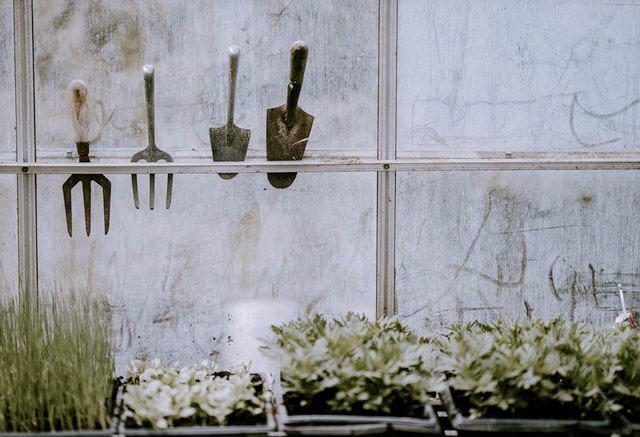
With the right gardening tools, keeping on top of weed control is a lot easier. Here are some tools that will help make light work of weeding.
Gloves
It’s a really good idea to protect your hands while weeding. Invest in some good gardening gloves that allow ease of movement to really get hold of weeds. I admit I don’t always put gloves on – when I walk around the garden and spot weeds I will usually pull them out then and there. But gloves really will protect your hands from not only developing rough and calloused hands with dirt that’s hard to remove, they’ll also protect you from any spider or insect bites. And in an organic garden, there are many beneficial insects in the garden. So protect yourself and our garden insects by wearing gloves such as these.
Garden Trowel
A small hand spade or garden trowel makes light work of lifting weeds from the ground. Invest in a strong, well-made hand trowel and it won’t bend and become useless like many of the cheaply made one. I like this garden trowel here.
Weeding Fork
I love my weeding fork and use it all the time! This tool helps to lift the root of the weed without disturbing the surrounding plants. Perfect for the vegetable garden and digging out those weeds with long taproots. Try this weeding fork here.
Edible Weeds
And if you can’t beat ‘em, eat them! Have you considered eating your weeds? Yes, you will need to do your research into edible weeds but once you are familiar with the benefits of edible weeds, you might just be growing them on purpose. You can find more information on 8 common edible weeds here.
Conclusion
So now you have a number of great strategies to control weeds in the vegetable garden using natural and organic methods. Use one or a combination of these tips to help keep on top of weeds in the garden so you can enjoy more of the plants you love. Do you have a favorite way to remove weeds? Please let us know in the comments below.
Recommended Products
Further Reading:
- Uncovering the Truth: Are Coffee Grounds Good for Plants?
- Best Organic Mulch for the Garden and Natural Mulch Ideas
- Why Does Mulch Smell Bad? (And How to Fix It)
- Milk Spray For Powdery Mildew (Natural Fungicide for Plants)
- Natural Remedies To Remove Stink Bugs From Citrus Trees
- Planning a Square Foot Garden for Abundant Vegetables
- Why Is My Raised Bed Growing Mushrooms? What You Need To Know
